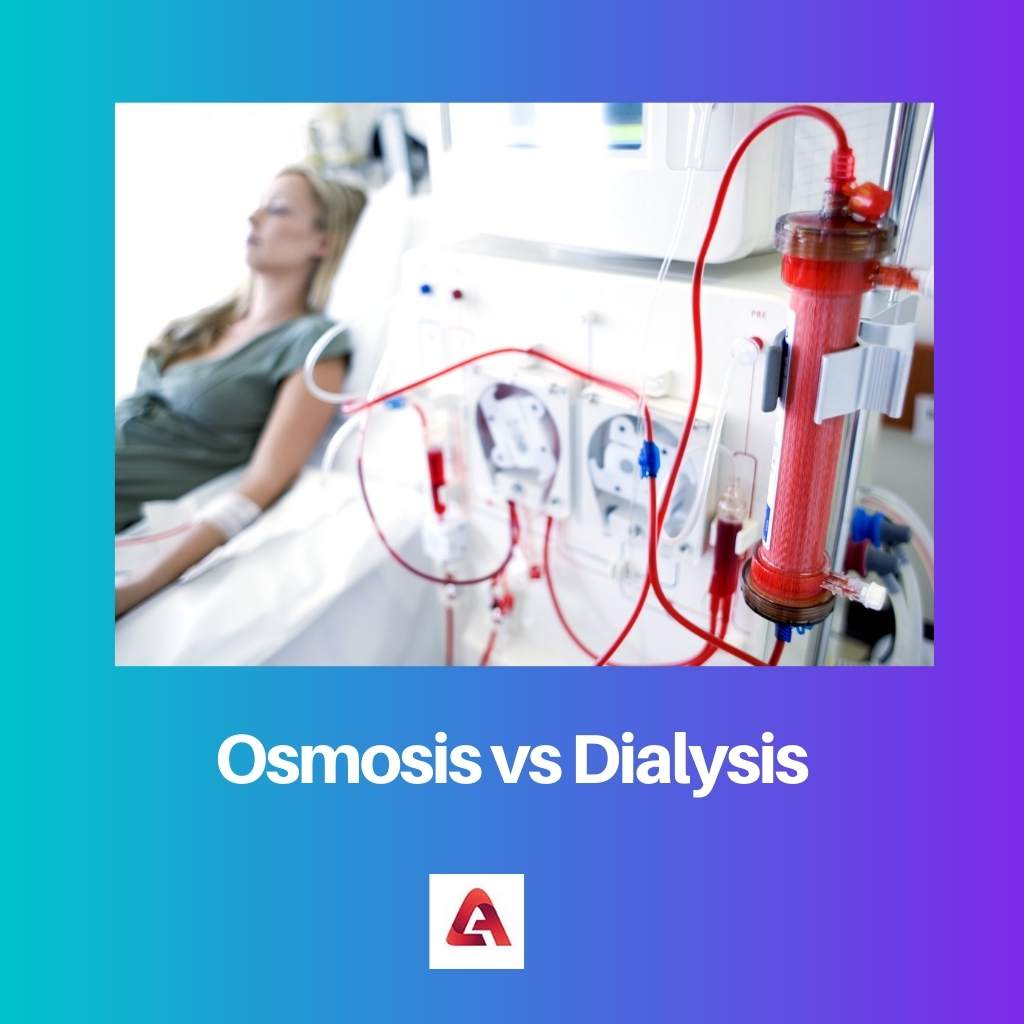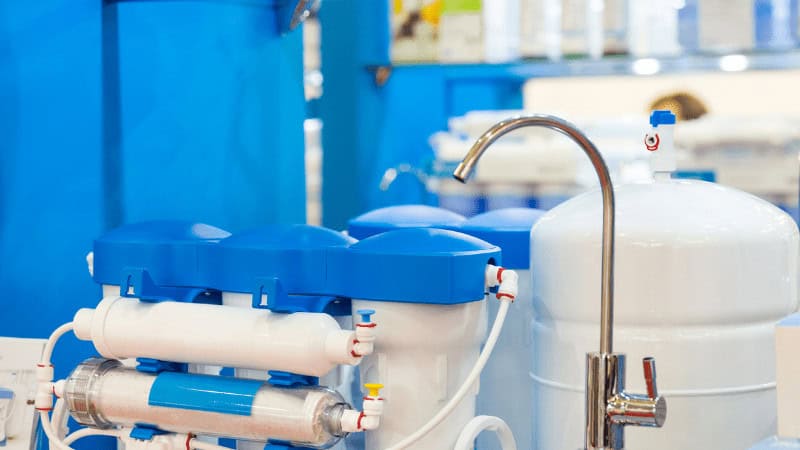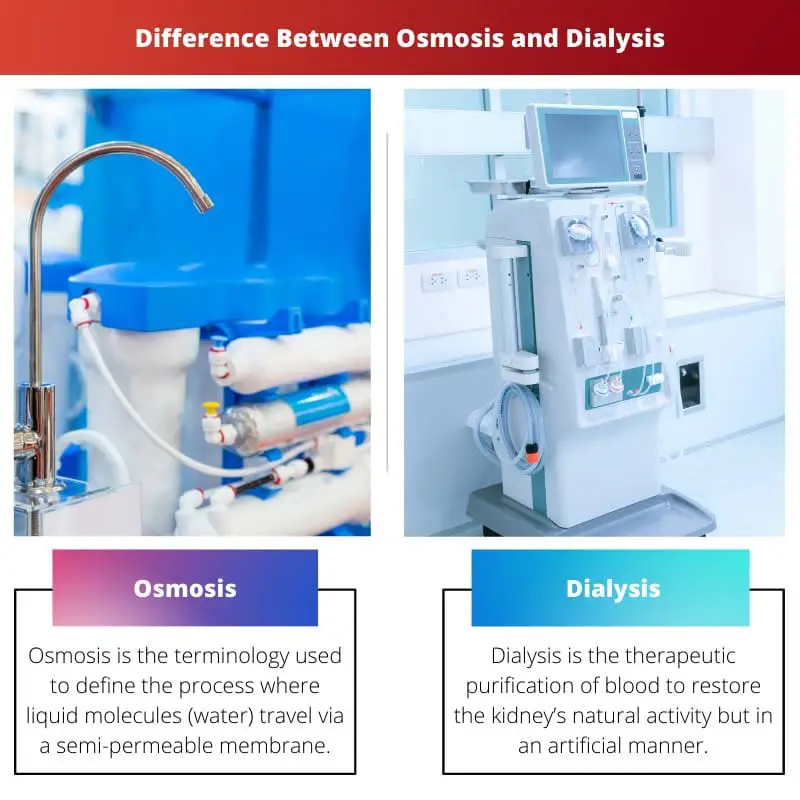Though both Osmosis and Dialysis methods involve the movements of fluids crosswise semi-permeable membranes, many consider similar processes that can sometimes be used alternatively.
But actually, they have vast differences amongst them. Both of these methods have their own share of importance as they are receptive transportation systems.
Key Takeaways
- Osmosis is the movement of solvent molecules through a semipermeable membrane from a region of lower solute concentration to a higher solute concentration. At the same time, dialysis is the separation of solutes in a solution based on their molecular size and charge.
- Osmosis is a natural process in living cells, while dialysis is an artificial process used in medical treatments such as kidney dialysis.
- Osmosis is a passive process that does not require energy, while dialysis is an active process that requires a dialysis machine.
Osmosis vs Dialysis
Osmosis is a procedure in which liquid molecules move through a semipermeable membrane. There are two types of osmosis processes. Dialysis is a process of blood purification so that the kidney can work normally. There are two methods of performing dialysis. Dialysis is also a treatment course for patients who want kidney transplants.

Osmosis is the process where the passage of water molecules travels from low pressure to a high-pressure area via a semipermeable membrane. The compulsion of osmosis causes the water to flow through the clefts or gaps.
It does not, though, have the strength to prevent particular molecules like salt or glucose.
Dialysis is the most used and popular method that medical professionals across the globe undertake to treat and help patients who are having or suffering from one or various kidney problems that prevent the latter from carrying out the natural processes on their own.
It is an artificial measure to assist the doings of the kidney.
Comparison Table
| Parameters of Comparison | Osmosis | Dialysis |
|---|---|---|
| Definition | Osmosis is the terminology used to define the process where liquid molecules (water) travel via a semi-permeable membrane. | Dialysis is the therapeutic purification of blood to restore the kidney’s natural activity but in an artificial manner. |
| Mechanism | The movement of the flow is from a less saturated zone to a more intense saturation. | Diffusion or filtration are two methods for dialysis. |
| Molecule Types | Only water molecule. | Water molecules, solutes, toxins, and metabolic excesses. |
| Types of Processes | Ex-osmosis and End-osmosis | Peritoneal dialysis and Hemo-dialysis |
| Types of Solvents | a. Extra-cellular fluid b. Cytosol | a. Dialysate b. Blood |
What is Osmosis?
Osmosis is the terminology that is used to identify the persistent net movement of water molecules via a selectively permeable membrane.
This movement of the liquid molecules happened into a higher solute concentration area from the lower saturation area in a direction that resembles standardizing the solute concentrations on both sides.
It may also refer to a physical phase in which any liquid passes through a selectively permeable membrane that separates two distinct amounts of solutions. It is possible to make osmosis work.
The exterior pressure must be exerted in such a way that there is no absolute movement of a solvent through the membrane, that is known as osmotic pressure.
Osmotic pressure is a phenomenon that possesses a colligative property. This means that it is determined by the solute’s molar concentration rather than its identity.
Osmosis is a crucial part of the method during the biochemical processes since biological membranes are semipermeable by nature. Huge and extreme molecules like ions similar to the ones of polysaccharides and proteins are impermeable to these membranes.
Although non-polar or hydrophobic molecules like lipids and small molecules like Nitrogen, Carbon Dioxide, oxygen, and nitric oxide are permeable.
The movement of a liquid via a semipermeable membrane from a region of low saturation to the zone with a higher concentration of the solute is defined as osmosis.
On the contrary, water is the most typical and most popular solvent in biological environments. Osmosis can also transpire in other liquids or supercritical liquids and sometimes even in gases.

What is Dialysis?
The very first dialysis that is recorded to be successful was recorded in the year 1943. In medical terminology, dialysis is the process used to remove excess water, solutes, and toxins from the blood of people whose kidneys cannot function naturally.
When there is an unexpected sudden failure of kidney function, known as an Acute Kidney injury, the phenomenon was earlier known as acute renal failure. Moreover, dialysis may be needed when a progressive deterioration in kidney function, known as chronic kidney disease, hits stage 5.
When the glomerular filtration valuation is 10–15% of normal, the creatinine allowance is less than 10 ml per minute, and if uremia is present, it is recognized as stage 5 chronic renal failure.
Dialysis can also be a treatment course for those waiting for a kidney transplant. Moreover, the latter can be the treatment or a permanent measure in cases where a transplant is not known or necessary.
The governments of countries like Australia, the United Kingdom, the United States of America, and Canada tend to help cover the bills of the patients required to take dialysis treatment and qualify the categorical criteria.

Main Differences Between Osmosis and Dialysis
- By definition and the basic difference between these two beings, Osmosis is the terminology that is used to define the process where liquid molecules (water) travel via a semi-permeable membrane.se solution, whereas in the case of Dialysis is the therapeutic purification of blood to restore the kidney’s natural activity but in an artificial manner.
- The movement of the flow is from a less saturated zone to a more intense saturation, whereas Diffusion or filtration are two methods for dialysis.
- The type of molecules in osmosis is only the water molecules. But in Dialysis, the type of molecules involved are Water molecules, solutes, toxins, and metabolic excesses.
- The types of processes undertaken under Osmosis are Ex-osmosis and End-osmosis, whereas, under Dialysis, it is Peritoneal dialysis and Hemo-dialysis.
- The types of solvents that are involved in osmosis are Extra-cellular fluid and Cytosol, whereas, in the case of dialysis, the types associated are Dialysate and blood.




